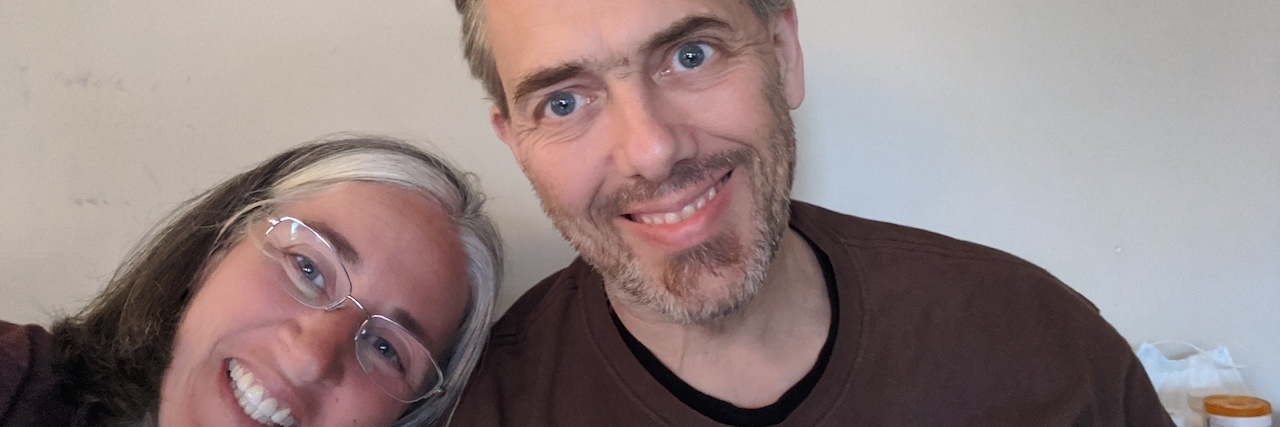One evening in April 2020, my husband, Doug, was rushed by ambulance to our local hospital with the symptoms of a stroke. On arrival he was given a CT scan which confirmed he had a large blood clot in the areas of the brain that control speech/language and the right side of his body. The “clot-busting” medication TPA was immediately administered, and he was then transferred by ambulance to a larger hospital, where he underwent a thrombectomy procedure to remove the clot via a catheter inserted in his thigh.
You might think the middle of a global pandemic would be the worst time to have a life-threatening medical event, but actually the converse turned out to be true. When Doug was rushed to the hospital, alone and unable to speak, I honestly wasn’t sure if I would ever see him again. But on his arrival the ER was mostly empty — with very few people on the road, doing sports or working in dangerous occupations, the trauma-related admissions were very low, and COVID-19 (or suspected COVID) admissions were being handled separately from the regular ER. The same was true for ORs, as all non-urgent and elective surgical procedures were on hold.
So when Doug entered the ER there was a doctor ready and waiting at the door, and an empty CT scanner ready to get immediate imaging. On transfer to the larger hospital, the OR was prepped and two neurosurgeons were already scrubbed in before he even entered the front doors.
Less than 24 hours after Doug’s thrombectomy procedure his right arm and leg had regained almost normal strength, and his speech was quickly recovering. He was stepped down from the ICU after two days and transferred to rehab a few days after that. Ten days after his stroke Doug returned home having made an almost 100 percent recovery.
The speed at which Doug received medical care (it was less than an hour between onset of symptoms and the delivery of the TPA medication, and less than two hours until he was in surgery) probably saved his life, and almost certainly was the main reason he was able to make a remarkably fast and almost complete recovery. That becomes even more clear when you look at the statistics: Only one in five people who have a stroke similar to Doug’s (classified as “Level 4” or “severe”) survive, and only about 10 percent of people who experience any kind of stroke fully recover with minimal disability, and even then it usually takes weeks or months of rehab.
There’s not a lot to be thankful for about the pandemic, but I am thankful that it probably saved my husband’s life.
Image via contributor

